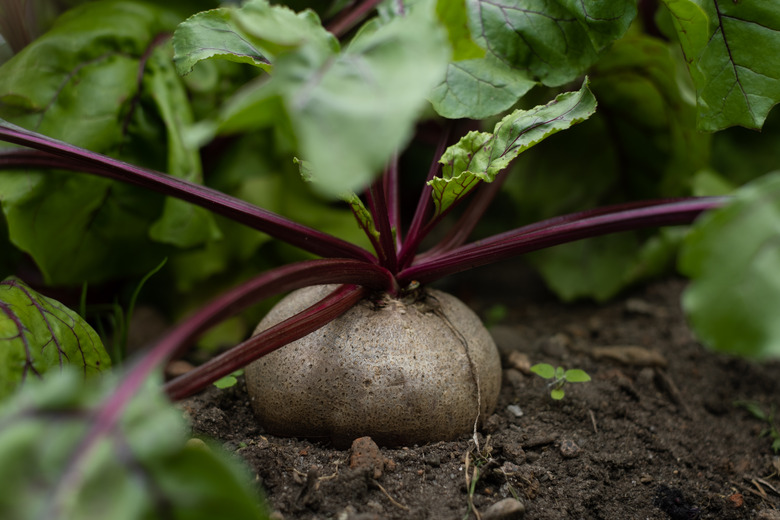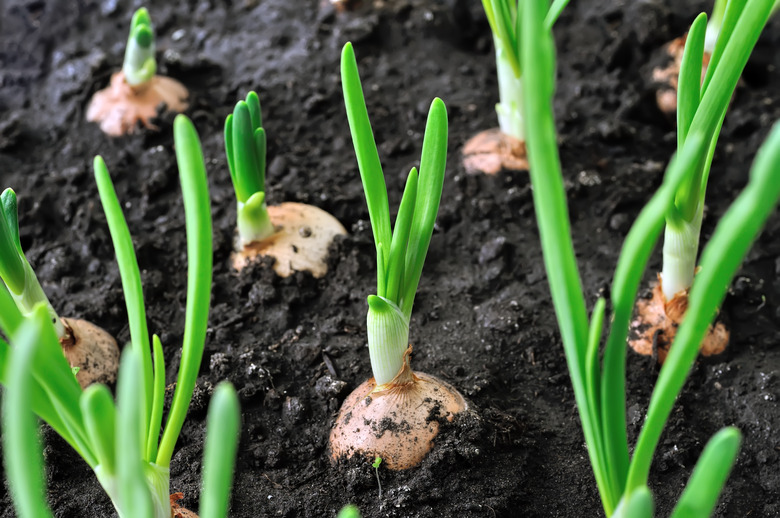What To Plant In The Winter: The 15 Best Winter Vegetable Garden Ideas
We may receive a commission on purchases made from links.
Are you thinking of putting in a winter garden? When gardeners speak of the "growing season," they are usually referring to spring, summer, and autumn. Winter, the colder, darker season, is not considered an optimal time to plant vegetables. However, with proper precautions, it is entirely possible to grow veggies in winter in many regions.
Preparing for a winter garden starts in the fall by gathering a list of the best crops to grow in winter.
The 15 Best Vegetables to Plant in Winter
The
15 Best Vegetables to Plant in Winter
While there are quite a few veggies that will grow in mild-winter regions, areas with cooler winters will have less from which to choose. Consider these 15 vegetables you can plant in winter in many parts of the United States.
1. Asparagus
Asparagus (Asparagus officinalis) is a perennial plant that is hardy in USDA zones 3-8, so there's no reason you can't put in a permanent asparagus bed. It can take a couple of years for the plants to come into their own, but once they are established, you can expect 25 spears per plant per year for a quarter of a century. Plant asparagus in the fall and give each one plenty of elbow room.
2. Garlic
If you decide to grow garlic (Allium sativum) in winter, you'll have many varieties from which to choose. Most have long growing seasons as perennials in USDA zones 4-9. Opt for either hardneck garlic (Allium sativum subsp. ophioscorodon) or softneck garlic (Allium sativum subsp. sativum) if your region gets freezing winter weather. Hardneck is more cold hardy, and softneck is more heat tolerant, so there is a rule of thumb that hardnecks should be grown in the North and softnecks in the South. In fact, both types can grow well in cold climates, and it is fun to experiment.
Plant garlic in the fall — September at the latest in the coldest zones — by planting cloves 4 inches deep in fertile, well-draining soil. Pick a full-sun site and plant when the soil temperature is around 50 degrees Fahrenheit. Cover the planting with a few inches of mulch.
3. Leafy
Greens
Leafy greens may look delicate, but they generally grow well in the cold. Think beyond lettuce (Lactuca spp.) to arugula (Eruca vesicaria), mustard greens (Brassica juncea), Swiss chard (Beta vulgaris), collards (Brassica oleracea [Acephala Group]), and spinach (Spinacea oleracea). Almost any leafy green will thrive over winter in mild climates, and they can make delicious winter salads. Leafy greens tolerate frost or moderate freezes, but if your winter weather gets really cold, you'll need to use row covers or plant the crops in a greenhouse.
4. Fava
Beans
Fava beans (Vicia faba), also known as broad beans, are cool-season veggies that have an incredible capacity to withstand winter cold. They are hardy down to an icy 40 degrees. That means they can be planted in late autumn for a crop in late spring. If your temperatures get colder than this, wait until spring to sow the seeds. In either case, plant the seeds in a sunny spot with well-draining soil and water sparingly. The cultivar Aquadulce Claudia (Vicia faba 'Aquadulce Claudia') is one of the best winter beans and is ready to harvest in about 85 days.
5. Radishes
Winter radishes beat summer radishes in taste and texture. They are crisp, mild, and less peppery. For a supply of homegrown radishes (Raphanus raphanistrum subsp. sativus) all winter long, sow a succession of radish plantings every two weeks. The seeds planted today can be on your dinner table in a few weeks. Protect your winter radishes with straw mulch in the fall and use floating row covers if temperatures drop.
6. Peas
Winter field peas (Pisum sativum), also called Austrian peas, are a cool-season annual. While tolerant of frost and hardy to USDA zone 7, they stop growing or die when temperatures dip below 10 degrees. These winter peas will be happy in any average well-drained soil but require a full-sun location. They are often planted as a winter cover crop and are plowed into the soil to increase soil nitrogen.
7. Cabbage
Winter cabbage (Brassica oleracea [Capitata Group]) is the preferred cabbage variety of many gardeners and your best bet for a winter garden. The plant is frost-tolerant but can't survive any hard freezes without protection. To get a winter harvest of cabbage, select a late-season cultivar. These have better cold tolerance than others and can keep you in homegrown cabbages from November through March. Cabbage has more problems with insufficient sunlight than with winter cold, so get plants in the ground early so they have time to mature.
8. Carrots
Carrots (Daucus carota subsp. sativus) like cool weather and are considered a cool-season crop. To get your household a winter supply of homegrown baby carrots in winter, sow carrot seeds in late July. Select a full-sun location with deep, loose soil. You don't need to thin the crop if you harvest regularly since this gives the remaining carrots more space to grow. To protect them from the cold, use straw or dried-leaf mulch, or in colder regions, use floating row covers on top of the mulch.
9. Broccoli
Broccoli (Brassica oleracea [Italica Group]) works well as a winter vegetable in mild-winter areas when planted in full sun on well-draining soil. It is among the most nutritious veggies, high in fiber and vitamins E and K. In colder areas, sow seeds directly into a cold frame or a greenhouse. While broccoli plants won't die from freezing temperatures, the crop may suffer serious damage.
10. Rutabaga
Rutabagas (Brassica napus [Napobrassica Group]) are a cross between a turnip and a cabbage. A perfect veggie for fall planting, a rutabaga develops the best flavor when it matures in cool, frosty weather. Those in cold-winter climates should plant this delicious veggie in late summer for a fall harvest. If you live in a mild-winter region, plant in fall for a winter crop. They mature in 80 to 100 days.
11. Beets
Overwintered beets (Beta vulgaris) are the candy of the veggie garden, amazingly sweet and delicious. They do best in mild-winter regions. Plant beets late in the fall and they'll get incredibly sweet since the roots store sugars during colder weather. Plant them in rich soil that is high in phosphorus and low in nitrogen. If you protect this delicious vegetable with mulch, you can eat beet greens and baby beets all winter long.
12. Leeks
Leeks (Allium ampeloprasum) are a standard crop in Europe but are not as common in American gardens. This onion relative has thick white stems that taste both sweet and like onion. They take an extremely long time to grow, some eight months from seeding. Leeks are very cold hardy and work well as a winter vegetable even in cold climates. For a winter crop, sow the seeds indoors in spring and in midsummer, transplant the seedlings outside in rich soil in partial sun.
13. Onions
Closely related to leeks, onions (Allium cepa) share their long growing season as well as an impressive cold hardiness. Planted in the fall, they won't need much help to last the winter. Don't count on a harvest until the following summer. Select a full-sun location, allowing 4 to 6 inches between bulbs. Since they grow underground, they have some cold protection, but a layer of mulch helps.
14. Kale
Like beets, kale (Beta vulgaris) grown in winter is sweeter and more delicious than that grown in summer. Kale can grow without protection all winter long, frost or no frost. Harvest kale leaves throughout the winter. As soon as the weather warms up, kale flowers and leaves become bitter and tough.
15. Potatoes
To grow potatoes (Solanum tuberosum) in winter, pick a winter-hardy variety and seed the crop in February. You'll be harvesting spuds in late spring or early summer. While extremely cold temperatures do not hurt these veggies, you'll need to plant before it gets too cold, or else the tubers won't form. Use a row cover when the weather is extremely cold.
6 Tips for Optimal Winter Gardening
1. Plant Based on Climate
When to sow your seeds or plant seedlings is an important question when it comes to a winter garden. The planting schedule will, of course, depend on the climate in your region. In mild-winter areas, you can plant after the summer harvest, sowing seeds well into fall. In colder climates, you'll need to plant earlier to give the crops a chance to start growing before the first frost.
2. Select Hardy Varieties
In this day and age, there are hundreds of varieties and cultivars of almost every common garden plant. Some have been specially developed to be cold hardy, and if you live in a cold-winter climate, finding these varieties is the place to start. Your local garden store is a good resource since it is likely to know what varieties grow well in the neighborhood.
3. Provide Cold Protection
Even if you select winter-hardy varieties, your winter garden project has a better chance of being successful if you understand the different ways you can protect your crops from the cold. Raised beds are perfect for cold temperatures since they keep the plants above the soggy ground and warm quicker in the sun. Mulch is also an invaluable "blanket" for garden beds, and a layer of straw or chopped, dried leaves can insulate plants as temperatures drop. For colder weather, turn to row covers.
4. Provide Wind Protection
It's important to plant your vegetables in a sheltered area. While snow and frost are generally considered winter's worst, wind can be just as destructive. Site selection is important. Try to select a planting site near a hedge or structure to break the wind. While row covers work fine for root vegetables, you'll want to consider polytunnels for veggies that grow above ground. It may save your plants.
5. Cover Crops
Once you've harvested a garden bed, it usually lies dormant until spring crops go into the ground, which leaves it prone to erosion. Cover crops, like peas that can later be plowed into the soil, can be effective in preventing soil loss. It also helps to restore nutrients and controls weeds.
6. Consider Potted Plants
Most people think of planting a garden in the backyard soil, but you can grow almost any type of winter vegetable in pots or grow bags. Planting in containers lets you prolong the growing season, and potted plants can be moved into shelter in case of truly inclement weather. For more protection, use a cold frame or greenhouse to shelter the container garden.















